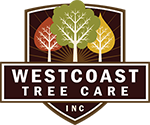Caring for Trees, Caring for Wildlife: How Portland Homeowners Can Protect Urban Nature
Portland is more than just a city of bridges and coffee—it’s a haven for urban wildlife. From black-capped chickadees flitting through backyards to squirrels nesting high in old-growth maples, our urban canopy plays a vital role in supporting a rich ecosystem of creatures, both large and small.
At Westcoast Tree Care, we believe that good tree care is about more than just safety and aesthetics—it’s about preserving the delicate balance between trees and the wildlife that depend on them. While we’re working in neighborhoods across Portland, we’re helping homeowners care for their trees in ways that also protect the nature living just outside their windows.
Portland’s Urban Forest: A Wildlife Sanctuary
The trees in your yard and along your street provide far more than shade—they create a web of life that supports:
- Songbirds and owls, which nest in cavities or high branches
- Pollinators like bees and butterflies, which rely on flowering trees and undergrowth
- Squirrels and bats, which shelter in hollows and old limbs
- Native insects, which fuel the food chain and improve biodiversity
Whether it’s a towering Douglas fir or a modest flowering cherry, your trees may be home to more life than you realize.
How Preventative Tree Care Helps Wildlife Thrive
Proper tree care can actually improve habitat quality and reduce the risk of losing critical trees to decay, storm damage, or disease. Here’s how:
✅ Strategic Pruning Creates Safer Habitat
By removing deadwood and weak limbs, arborists help ensure that nesting areas remain stable and don’t pose a risk to either wildlife or your property.
✅ Healthy Trees Last Longer
Routine inspections and pruning extend a tree’s life, preserving habitat for decades to come.
✅ Wildlife Trees Can Be Left Intentionally
When safe to do so, we sometimes recommend leaving snags or partially dead trees standing as “wildlife trees”—ideal for woodpeckers, owls, and insects. This decision is always made case-by-case, based on location and safety.
✅ Removing Dangerous Trees Can Save Nearby Habitat
Sometimes removing one compromised tree protects others from falling limbs, root spread issues, or disease transmission—ultimately preserving more trees long-term.
Timing Matters: Nesting Season in Portland
While spring is a great time for tree assessments, homeowners should be mindful of bird nesting season, which peaks between April and July. That doesn’t mean pruning is off-limits, but it does mean care must be taken to avoid disturbing active nests.
When you work with Westcoast Tree Care, our certified arborists check for nests before pruning and adjust our timing and techniques as needed.
What You Can Do as a Homeowner
- Watch for wildlife activity before trimming trees or shrubs
- Schedule regular tree health assessments to prevent emergency removals
- Plant pollinator-friendly species beneath your canopy
- Ask your arborist about habitat-conscious tree care options
Tree Care That Respects the Ecosystem
At Westcoast Tree Care, we’re proud to serve Portland with a deep respect for the environment and everything that calls it home. Our ISA Certified Arborists are trained not only in structural care and pruning best practices—but in ecologically mindful tree management.
We’re currently offering free, no-obligation tree assessments throughout the Portland metro area. If you want to protect your home and your neighborhood’s natural balance, we’re here to help.
Contact Westcoast Tree Care today by filling out our online form or calling 1.800.767.8733 to get a no-cost, no-obligation for any of our Portland tree care services.








